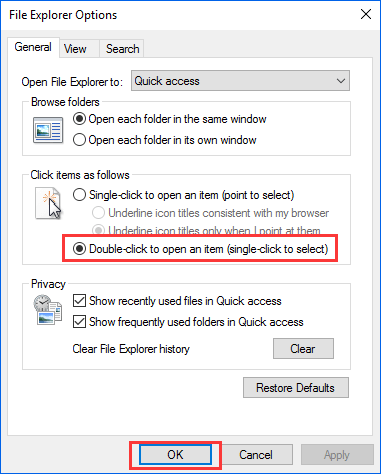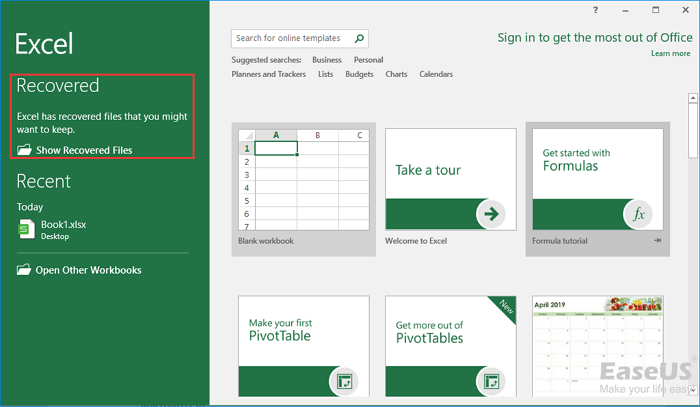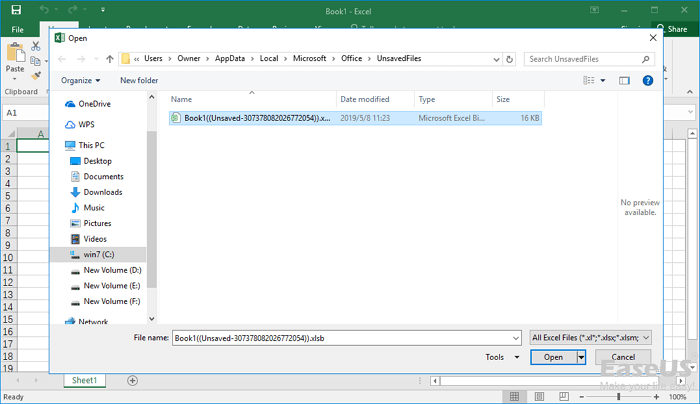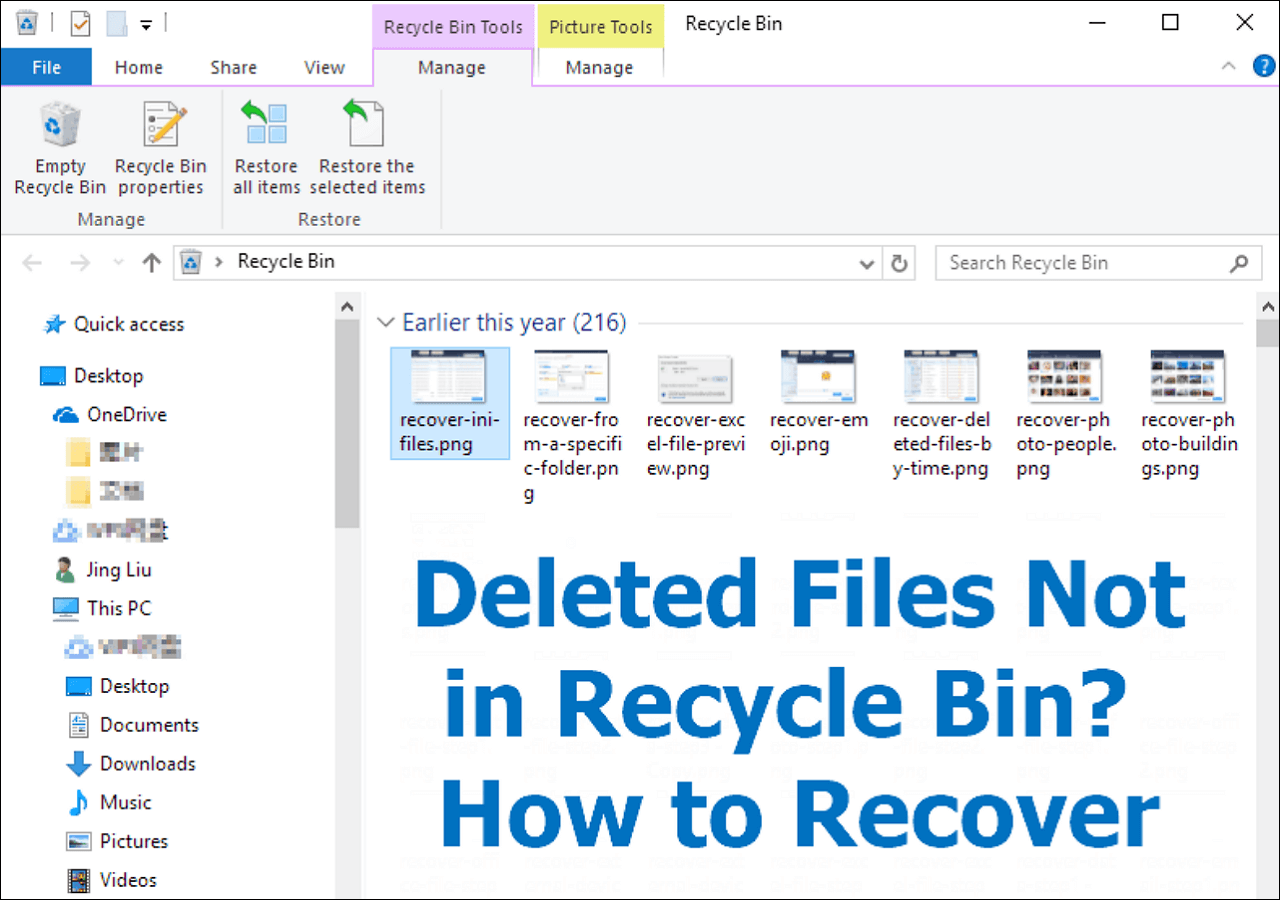-
![]()
-
![]() My Excel File Disappeared! Recover Lost Excel File 2016/2013/2010/2007
My Excel File Disappeared! Recover Lost Excel File 2016/2013/2010/2007 December 12,2025
December 12,2025 6 min read
6 min read -
![]() Outlook PST Path: Where Is Outlook PST Files Store on Windows 11/10/8.1/8/7/XP/Vista
Outlook PST Path: Where Is Outlook PST Files Store on Windows 11/10/8.1/8/7/XP/Vista December 12,2025
December 12,2025 6 min read
6 min read -
![]() How to Recover an Unsaved Word Document When Computer Shuts Down
How to Recover an Unsaved Word Document When Computer Shuts Down December 12,2025
December 12,2025 6 min read
6 min read -
![]()
-
![]()
-
![]()
-
![]()
-
![]() How to Corrupt a File So It Won't Open on PC and Mac [Easy Guide]
How to Corrupt a File So It Won't Open on PC and Mac [Easy Guide] December 12,2025
December 12,2025 6 min read
6 min read -
![]()
Page Table of Contents
How to recover a deleted user profile in Windows 10? Try to boot Windows 10 into safe mode, restore deleted old user profile files with recovery software, enable the administrator account, create a new user account, and replace the new account's user profiles with restored old user profile data.
Sometimes, when the C drive gets full, people tend to delete the large files in the C drive to free up disk space. However, some people may mistakenly delete the wrong files, such as the User Profile - saved folders and files under C:/User.
As a result, when you restart Windows 10, you won't be able to log in to the system as the files associated with your old User Account have been removed. To resolve this issue, you'll need to recreate a new user account, bearing the loss of your files. You can also refer to the solutions provided in this guide to bring the User Profile back effectively.
PAGE CONTENT:
Hi guys, do you know how to recover a deleted User Profile in Windows 10? My mom accidentally deleted my user profile, and all the pictures, photos, and document folders disappeared from the computer. No backups were created in Windows 10 previously. So, how can I restore the deleted User Profile with all the lost files in Windows 10? If you have a solution, please let me know. Thanks.
Losing User Profiles may cause file loss issues and some personal settings vanish errors in Windows PCs. This problem still bothers many Windows 10 users. If you have a similar issue in Windows 10/8/7, do not panic.
Below, you'll find 3 methods in Part 1 to effectively restore deleted User Profiles and 2 ways in Part 2 to back up and protect User Profile in Windows with ease.
Restore Deleted User Profile in Windows 10/11
| Note: The solutions provided in this part may also work for Windows 8 and Windows 7 users to bring the lost User Profiles back. Only some specific operations may be different. |
In order to help you find a handy solution to bring lost User Profiles back, all provided methods will be listed from easy to difficult. Let's start the restoration process now.
Before You Start, Boot Windows 10 into the Safe Mode
If you have an issue where you can't log into Windows 10 after deleting the User Profile, follow the steps below to boot Windows 10 into Safe Mode first.
- 1. Reboot PC. On the sign-in screen, hold the Shift key and click "Power", then select "Restart".
- 2. You'll be presented with an options screen. Here, select Troubleshoot > Advanced options > Startup Settings > Restart.
- 3. Press F4 when the computer is booting up, and it will then start in Safe Mode.
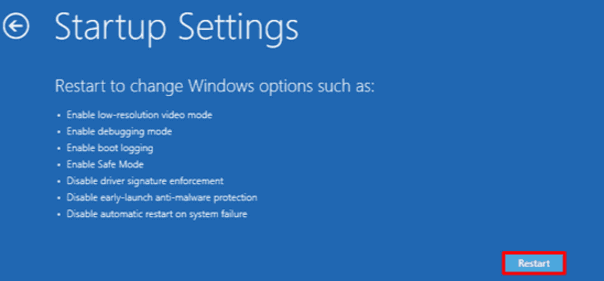
When the process finishes, continue with the following methods to learn how to bring your lost User Profiles back.
- Method 1. Restore Deleted User Profile Files and Create a New Profile
- Method 2. Manually Restore Deleted User Profile in Windows 10
- Method 3. Perform System Restore and Bring Deleted User Profile Back
Method 1. Restore Deleted User Profile Files and Create a New Profile
The most direct way to fix this issue is to restore the deleted User Profile documents and files and create a new User Profile in Windows 10. Go through the steps below and bring your lost files back immediately:
1. Restore All Deleted Old User Profile Files with File Recovery Software
Professional EaseUS Data Recovery Wizard can effectively scan and restore deleted files in Windows 10, including the User Profile files and documents. Here, we'd recommend you try EaseUS Data Recovery Wizard. It simplifies the whole file recovery process in only 3 steps:
- Recover lost files, documents, photos, audio, music, and emails effectively.
- Restore any data showing up in the result during the scan process.
- Support data recovery for sudden deletion, formatting, hard drive corruption, virus attacks, and system crashes under different situations.
Step 1. Run EaseUS Data Recovery Wizard. Choose "Select Folder" under Specify a location. Browse for the location where you lost the folder and click "OK" to scan.
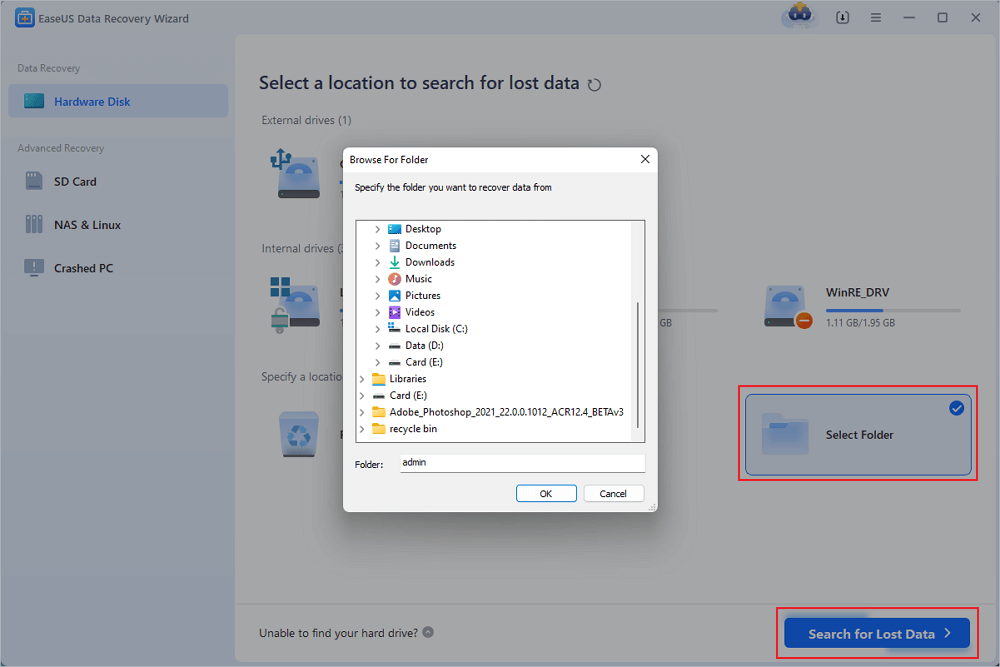
Step 2. You can search for the target folder or use the Filter feature to find a certain type of files in the folder.
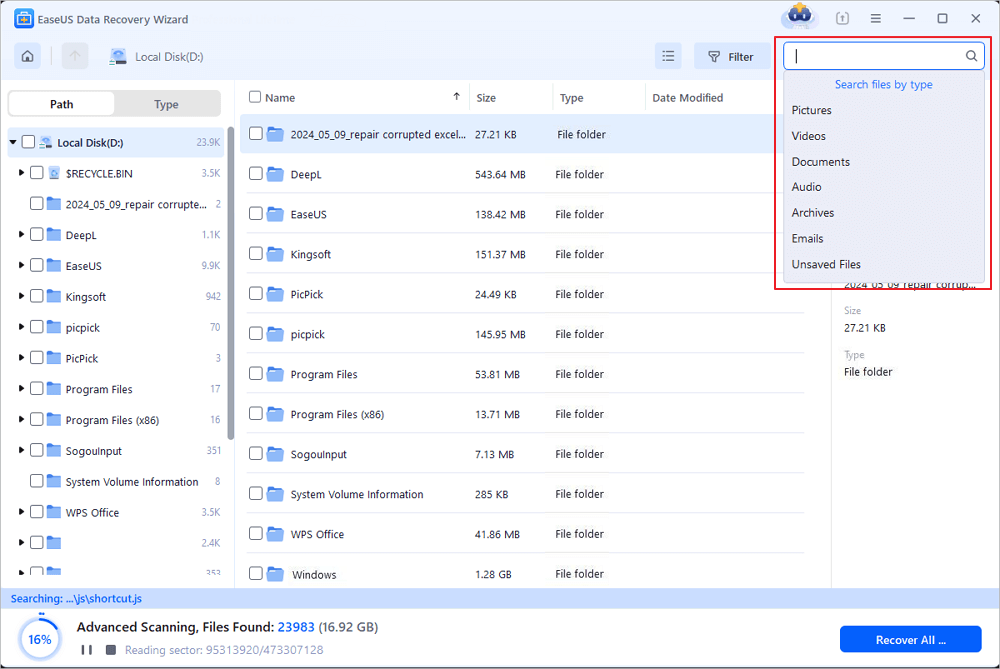
Step 3. You can preview the recovered folder. Then, click "Recover" and choose a new & secure location on your PC or cloud storage to keep the recovered data.
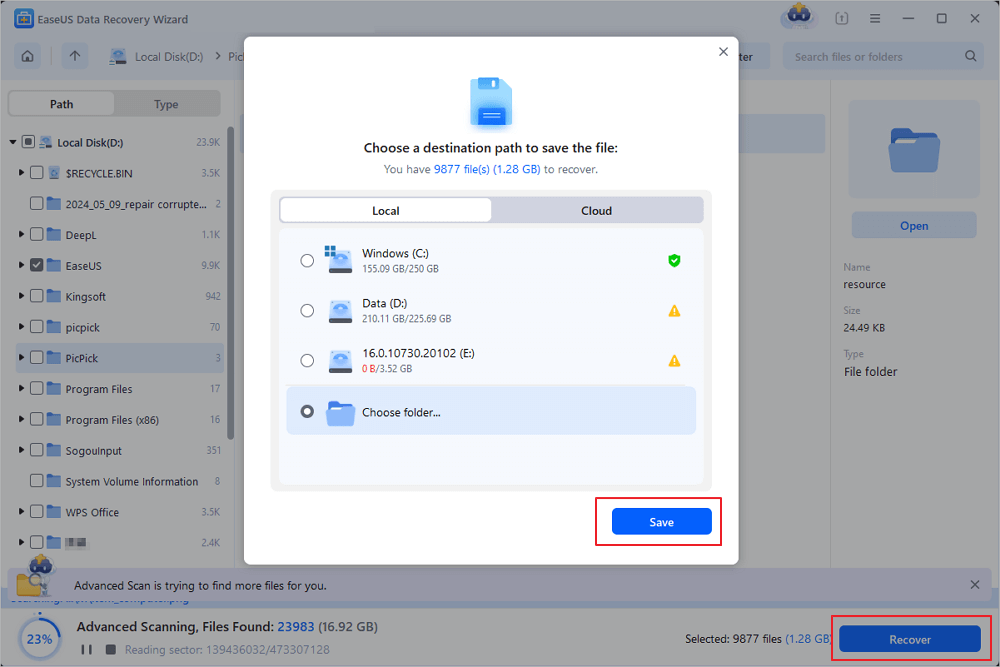
Note: After restoring the files, save the User Profiles on an external storage device. And continue with the following methods.
If you find this information helpful, please share it with others on social media to assist them in overcoming this common challenge.
2. Enable the Administrator Account and Create a New User Account
Step 1. Right-click the Start or Windows icon, select "Search" and type: command prompt. Select Command Prompt (Admin).
Step 2. Type: net user administrator /active: yes and hit Enter.
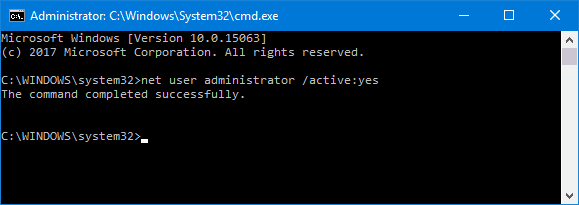
Note: You can switch "yes" to "no" when you want to reverse this in the future by running the same command.
Doing so will enable the hidden administrator account on your computer. After this, restart the computer, and you can create a new account.
3. Create a New Account - New User Account
Step 1. Go to Settings > Accounts > Family & other users.
Step 2. Click "Add someone else to this PC" and follow the on-screen guidelines to complete the process.
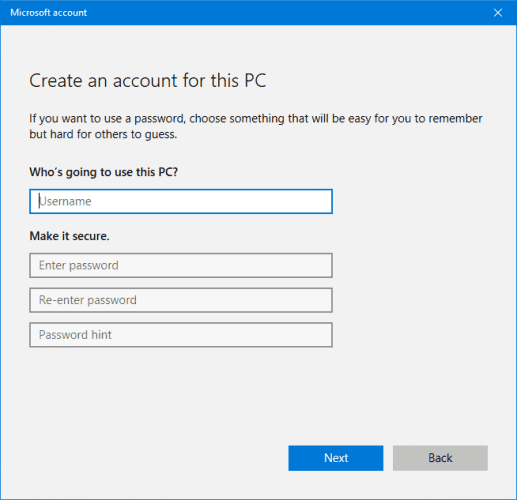
Note: If you want to recover deleted user account Windows 11 instead of a Microsoft one, click "I don't have this person's sign-in information" > Then select "Add a user without a Microsoft account".
4. Replace New Account User Profiles with Restored Old User Profile Data
You can copy and paste the restored User Profile files and documents to your new account.
Step 1. Restart your PC and log into the administrator account.
Step 2. Press the Windows + R keys to open Run, type C:/Users, and hit Enter.
Step 3. Copy and paste all the restored user profiles into the new one.

✏️Note: We suggest you do this individually for each folder in case you accidentally bring across some hidden and problematic system files.
After replacing the files in the new user account, you can restart your PC and keep all the changes. By doing so, you can use your old User Profile data with the new account again.
Method 2. Manually Restore Deleted User Profile in Windows 10
The other way that works to get a lost User Profile back is to use Registry Editor. Here are the steps to use this method:
1. Find out the Security Identifier
Step 1. Open Command Prompt by right-clicking on Start or Windows icon > Click Search > Type: command prompt and hit Enter.
Step 2. Type whoami /user and hit Enter.
This command queries the system to your SID of the current account.
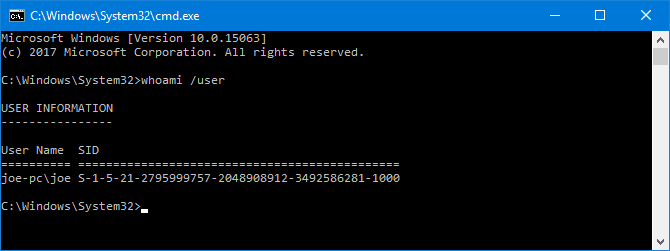
2. Edit the Registry
Step 1. Type: regedit in the Search and hit Enter > Click "Yes" to open Registry Editor.
Step 2. Navigate to the below path to find your User Profile list:
HKEY_LOCAL_MACHINE\SOFTWARE\Microsoft\Windows NT\CurrentVersion\ProfileList
Usually, the SID will be listed twice - with or without a .BAK extension:
- SID listed with a .BAK extension, such as: S-1-5-21-2795999757-2048908912-3492586281-1000.bak
- SID listed without a .BAK extension, such as: S-1-5-21-2795999757-2048908912-3492586281-1000
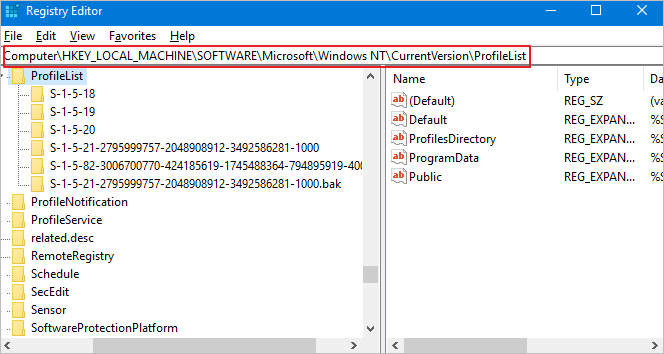
Follow one of the options provided below to complete the deleted User Profile recovery process:
- Option 1. Delete Duplicate Folder
If the SID is listed twice, delete the folder without the .BAK extension:
1. Right-click the folder from the left-hand pane and click "Delete".
2. Click "Yes" to confirm.
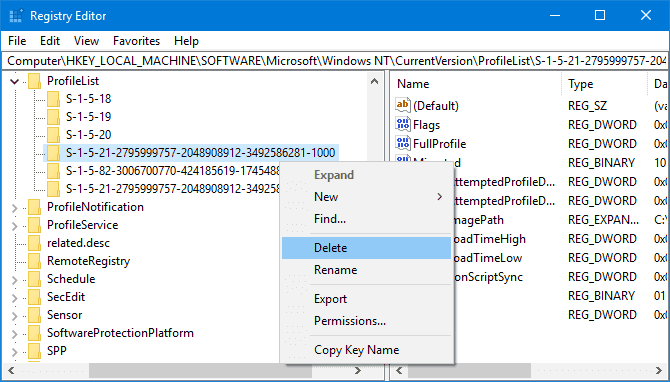
- Option 2. Rename.BAK Folder
- 1. Right-click the folder matching your SID with the .BAK extension and click "Rename".
- 2. Remove.BAK from the end of it and hit Enter to save all changes.
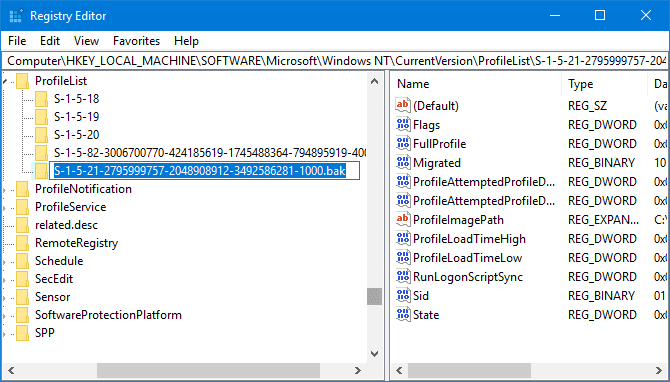
- Option 3. Adjust the Folder Path and State
1. Click the folder on the left-hand pane that matches your SID.
2. Locate and double-click ProfileImagePath. Input the correct path for your user profile in Value Data.
✏️Note: If you are not sure where your user profile is, press Win + R, input C:\Users, and hit Enter. Then, you'll see the correct path of your user profile.
3. Click "OK" once you've written the correct Value Data.
4. Double-click "State" on the right-hand registry pane, change the Value data to "0", and click "OK" to confirm.
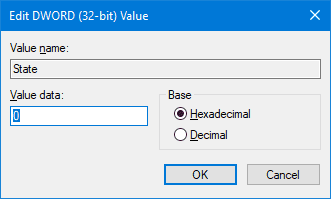
Finally, close Registry Editor, restart your PC, and sign back into your user account. Everything you've deleted shall be back, and you can reuse it again.
Method 3. Perform System Restore and Bring Deleted User Profile Back
💡Important: A System Restore Point will record everything on your PC, including the system state and saved files, which include the User Profile, installed programs, etc.
A System Restore Point will record everything on your PC, including the system state, saved files, User Profile, installed programs, etc. You will return your system to its previous state by performing System Restore. Of course, this will bring back your lost User Profile documents.
Step 1. Right-click on the Windows icon and select "Search".
Step 2. Type: create a restore point, and click the top result to open "System Properties".
Step 3. Click the System Restore button under the System Protection section to bring up all the restored points you've created.
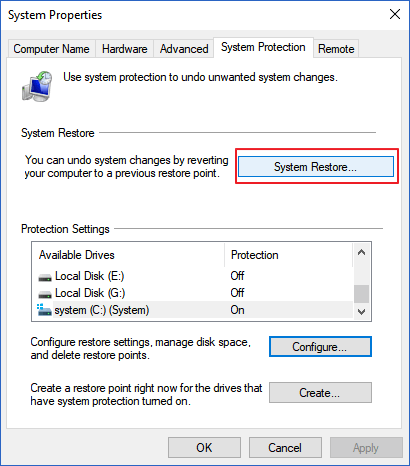
Step 4. Click "Next" and select the restore point you want to use and restore on your PC.
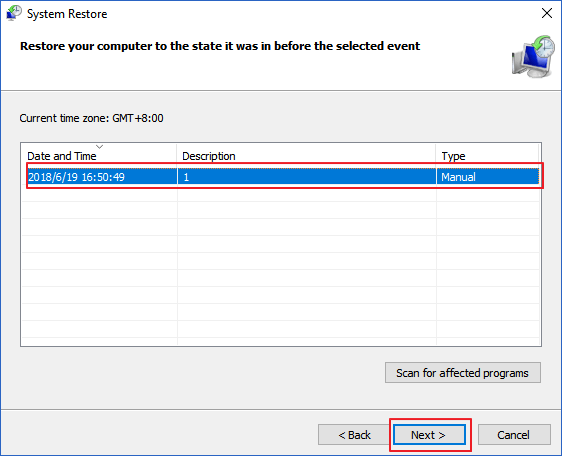
Step 5. Click "Finish" to confirm your restore point and click "Yes" to execute the System Restore on your PC.
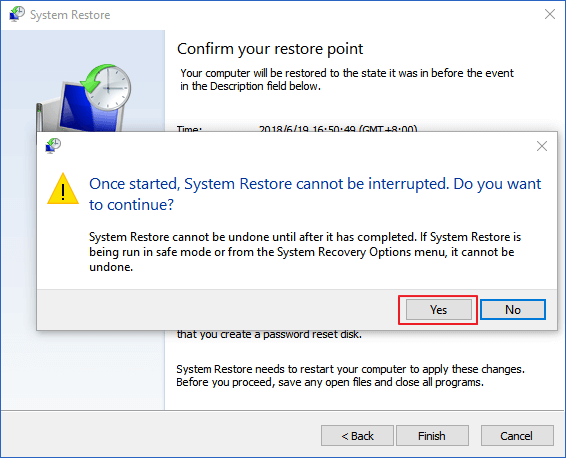
Wait for the process to finish, and then restart your computer. Log in with your old User Account, and you'll be able to use the User Profile documents again.
Tips to Protect Valuable User Profiles and System
Part 1 includes comprehensive solutions to help you bring all lost User Profile documents back. However, do you know that there is even an easier and better way to prevent this disaster from happening?
Here, we've covered several practical tips to help you protect your User Profile and Windows system. Follow along to learn how to protect your valuable files and Windows system:
- 1. Copy the User Profile with the File History
File History in Windows 10 can help you copy and save individual files as a backup. You can use this feature to back up your User Profile selectively.
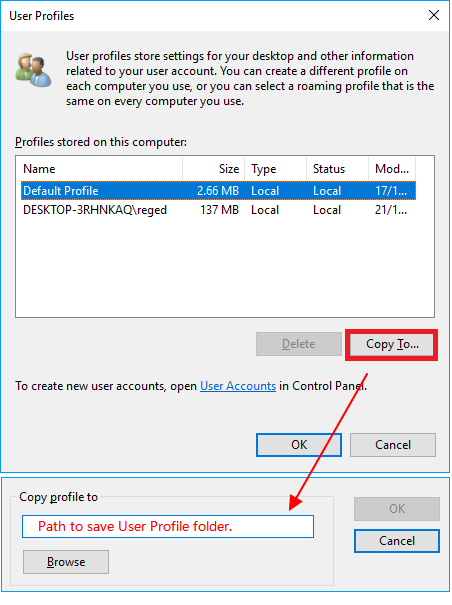
- 2. Use Windows Backup Software - EaseUS Todo Backup
This backup software enables you to selectively back up the User Profile folder or Windows system in only 3 steps. All you need to do is decide what you want to protect.
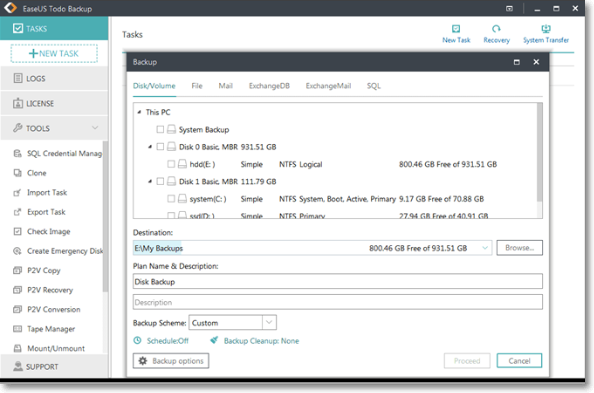
- 3. Create a Windows Restore Point
To do so, you need to first enable the System Protection by going to System Properties > clicking System Protection > Selecting System C: drive and click "Configure" > Clicking "Enable".
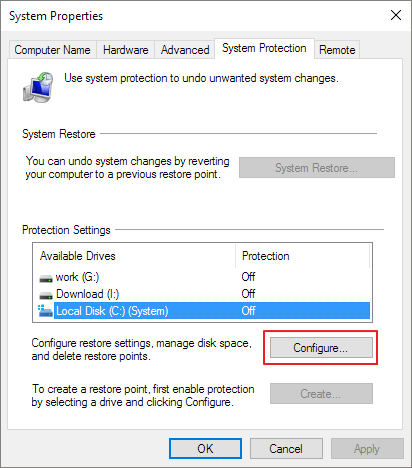
Then, follow the on-screen guidelines to browse to a large enough drive to create and save the Windows restore points.
Recover Deleted User Profiles and Files in Windows FAQs
Here are 4 additional questions about recovering deleted User Profiles and essential files in Windows 10. Check here for the answers.
1. What is a User Profile on Windows?
A user profile collects user settings and information for the associated user account. On the other hand, a user account is your point of entry into Windows 10. It is formed during the installation of Windows, and you can sign in to your PC with a user account and create several user accounts inside.
2. How to delete a user profile from Windows 10?
- Delete a user profile manually.
- Remove a user profile from the system properties.
- Delete a user profile using the Settings app.
You can also select to copy and transfer the user profile.
3. Can I restore the files of a deleted Windows user account?
A System Restore backs up everything on your Windows PC. It contains the system status, installed programs, saved files, the User Profile, and so on. As a result, you can restore your PC to its prior state using System Restore.
4. How do I recover a user from the deleted Users in Office 365?
This error has been associated with one of the following causes: The user profile has been corrupted or is missing. The integrity of the file system has been jeopardized due to disk write mistakes, power interruptions, or virus attacks. Search for and select one of the available users on the Deleted users page.
Was this page helpful?
-
Jaden is one of the editors of EaseUS, who focuses on topics concerning PCs and Mac data recovery. Jaden is committed to enhancing professional IT knowledge and writing abilities. She is always keen on new and intelligent products.…
-
Mahesh is an experienced computer tech writer. He's been writing tech how-to guides for about 8 years now and has covered many topics. He loves to teach people how they can get the most out of their devices.…

20+
Years of experience

160+
Countries and regions

72 Million+
Downloads

4.9 +
Trustpilot Score


Free Data
Recovery Software
Recover data up to 2GB for free!
